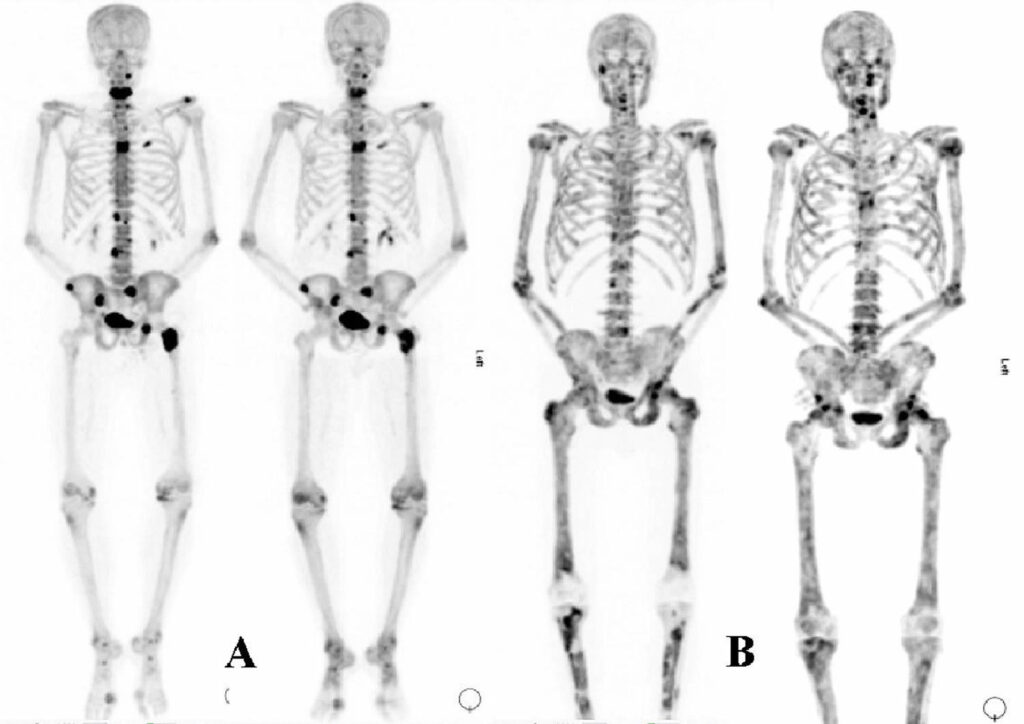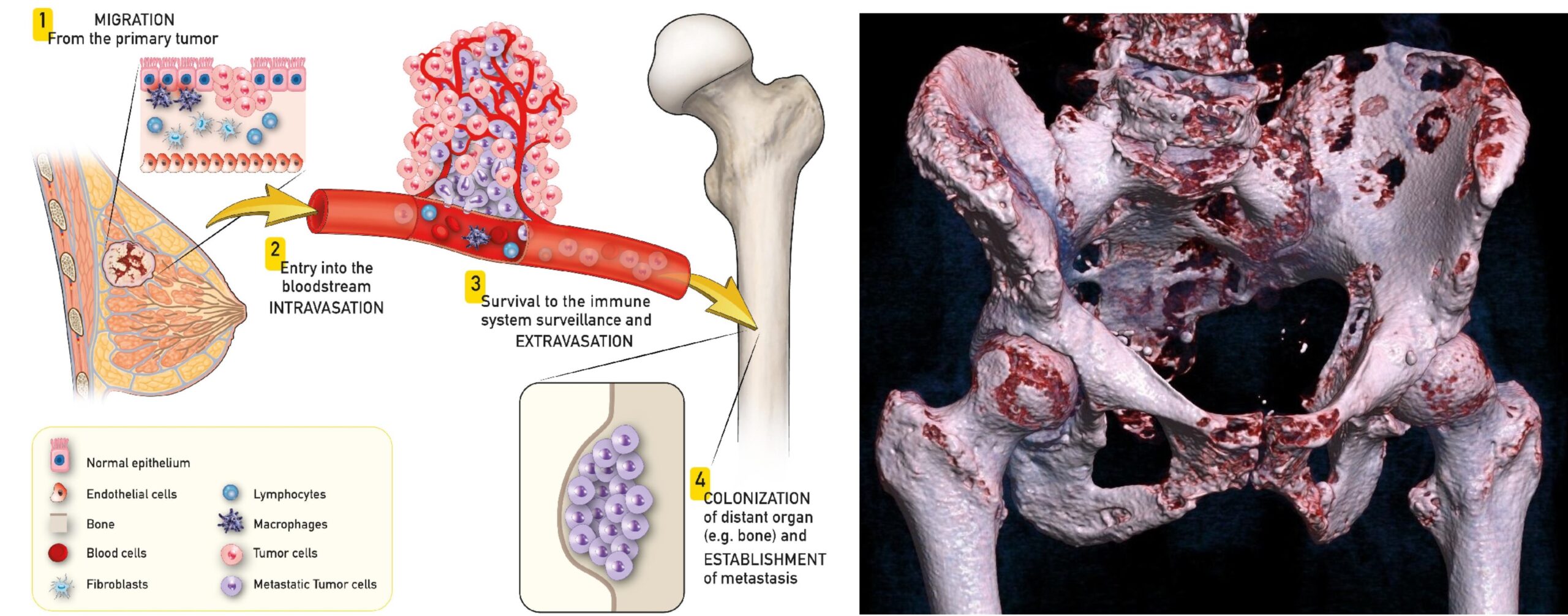Percutaneous Acetabuloplasty in metastatic supra-acetabular lytic lesion

The bones of the human body provide structure and support for the body, but they can be affected by various diseases, including cancer. Secondaries to bone occurs when cancer cells spread from a primary cancer site to bones, and it is one of the most common causes of bone pain and fractures in cancer patients.

One area that can be particularly affected by metastatic bone disease is the hip joint, specifically the acetabulum, which is the cup-shaped socket of the hip joint where the thigh bone (femur) connects. When cancer cells spread to the acetabulum, they can cause a lytic lesion, which weakens the bone and can lead to pain, instability, and even fracture.
Traditionally, the treatment for metastatic bone disease involving the acetabulum has been surgery, such as a hip replacement or pelvic reconstruction. However, these surgeries are often invasive and have significant risks and complications, especially in patients with advanced cancer. In recent years, a less invasive option has emerged: percutaneous acetabuloplasty.
Percutaneous acetabuloplasty is a minimally invasive procedure that involves the injection of bone cement into the acetabulum to stabilize the bone and provide pain relief. The procedure is performed under local anaesthesia and image guidance, such as fluoroscopy or CT scan.

In patients with a lytic lesion in the supra-acetabular region, percutaneous acetabuloplasty can be an effective treatment option. The procedure involves accessing the acetabulum through a small incision, and then injecting bone cement into the lesion to stabilize the bone.
Studies have shown that percutaneous acetabuloplasty can provide significant pain relief and improve function in patients with metastatic bone disease involving the acetabulum. The procedure has also been shown to have a low complication rate, with most complications being minor and easily managed.
In addition to its effectiveness in treating metastatic bone disease, percutaneous acetabuloplasty has several other advantages over traditional surgical options. The procedure is less invasive, which means it can be performed on patients who are not candidates for more extensive surgery. It also has a shorter recovery time, with patients typically able to return to their normal activities within a few days of the procedure.
In conclusion, percutaneous acetabuloplasty is a safe and effective treatment option for patients with metastatic bone disease involving the acetabulum, specifically in the supra-acetabular region. The procedure provides significant pain relief and improved function while being less invasive than traditional surgical options. As with any medical procedure, it is important to discuss the risks and benefits with your healthcare provider to determine if percutaneous acetabuloplasty is the right option for you.




